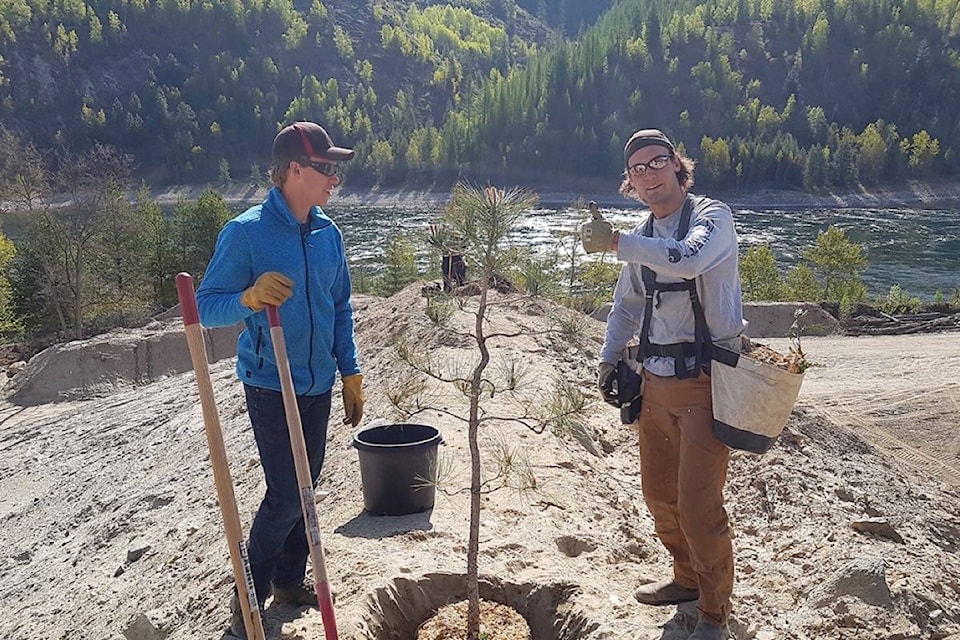A group of 50 Selkirk College students in both the Integrated Environmental Planning (IEP) Program and Forest Technology Program spent two days restoring habitat on the banks of the Columbia River for the Silver City Trap Club.
Just after completing the first year of their two-year diplomas, students and their instructors participated in an innovative project to help restore vegetation following re-contouring of the shooting ranges just north of Trail.
As part of the requirements of their spring field school, students in the IEP program first created a three-dimensional model with the Selkirk College Geospatial Research Center stitching together photos from a drone. Then they applied an experimental bank stabilization prototype.
“This was an incredible opportunity for our students,” says Doris Hausleitner, the Selkirk College instructor who teaches the IEP restoration field school. “The trap club provided a great situation where we could teach and apply some of these new technologies”.
For forestry students, it was the first time they had applied silviculture to a restoration project.
“The objectives of field school are to apply concepts covered in the curriculum to real- world situations,” says Carol Andrews, the Selkirk College instructor who teaches the forestry field school. “When they dovetail with community projects, the students and instructors get so much more out of the projects.”
The Silver City Trap Club, located midway between Castlegar and Trail, recently reconstructed their shooting ranges, resulting in soil and vegetation disturbance. Members of the club took it upon themselves to enhance the area for reptiles, in particular two species at risk, the Western skink and the rubber boa, creating areas where they can overwinter, find cover and bask. Additionally they are making an effort to stabilize steep slopes and revegetate some of the disturbed areas.
“It was a challenging project and the club members were blown away with how diligently all the students worked,” says club member Bill Chapman. “The students planned and implemented the restoration in a safe and controlled way. Absolutely fantastic.”
